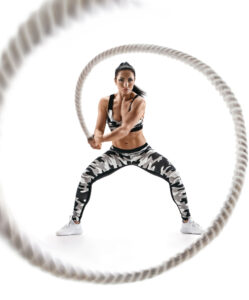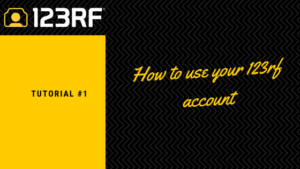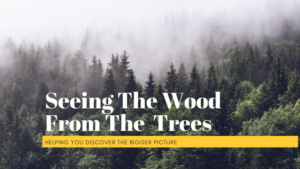What do you do after you’ve uploaded your content? The next step would be keywording your content so that it’s easier for potential buyers to locate them. It’s important to have a clear and accurate description and keywords for your images while keeping in mind to avoid certain copyrighted keywords for royalty-free content. Here, we’ll guide you on how to go about describing your content effectively. Once you get the hang of it, adding metadata to your stock content will be an absolute breeze.
Basic Outline to Describing and Keywording Photos and Vectors on 123RF
Before we launch into the details, here’s a quick outline of the basics in describing and keywording photos and vectors:
- Describe the image as accurately as possible.
- Enter a minimum of 7 keywords for each image.
- Keywords should be separated by commas, everything between commas is treated as a keyword or a key phrase.
- Kindly provide description and keywords in English.
- If your keywords are in another language other than English, they will be automatically translated once you click on the SUBMIT FOR REVIEW button. Our system will help you translate all foreign words into English.
This translation feature is available for these languages:- Simplified Chinese
- Traditional Chinese
- Polish
- German
- Turkish
- Japanese
- Korean
- Russian
- French
- Italian
- Hungarian
- Czech
- Portuguese
- Spanish
- Dutch
- Refrain from adding unrelated keywords (spamming).
- Do not put in dates of the event in the keyword list.
- Copyrighted keywords of famous brands and names like Audi, McDonald’s, and Teflon should NOT be included in the keyword list.
- Ensure that keywords are free from errors (spelling, typo, sentence grammar) as it is not possible for you to edit/amend once the images have been accepted. Check your description and keywords thoroughly before saving them.
After you’ve grasped the basics, you can now focus on enhancing the details, starting with the image description.
| Best Practices on Describing Photos and Vectors | ||
| Be as clear and concise as you can | Describe what you know to be factual | Refrain from using copyrighted brand names |
We would recommend that the descriptions for your illustrations follow these simple criteria:
★ Write a comprehensive description of what you see in the image.
GOOD: Three business people having a discussion
NOT SO GOOD: Three young business people wearing light business outfit looking at document and smiling
*You can always cover what specific items are there in the image within the keywords itself.
★ Leave out any terms that refer to a model’s ethnicity or nation of origin.
GOOD: Man drinking coffee
NOT SO GOOD: African American man drinking coffee
*The reason why ethnicity is left out is that you will add that information in the keywords section. In addition to that, if an image contains people with multi-ethnic backgrounds it will be quite a task to fit everyone’s ethnicity into the description.
★ Don’t use trademarked words/brands in your image description.
GOOD: Man playing wooden blocks
NOT SO GOOD: Man playing Jenga
*Your images and keyword list should never have brands such as Apple, or iPod or Dell, keep it generic such as, desktop computer, laptop computer or MP3 player. It must never endorse a certain brand.
★ Give the exact name if the geographic location is an important aspect of the image.
GOOD: Monument Valley Navajo Tribal park in Utah
NOT SO GOOD: Monument Valley Navajo Tribal Park in Utah which is a great valley boasts sandstone masterpieces that tower at heights of 400 to 1,000 feet
*If you know exactly what you’re photographing, it always helps to add it into the description. Short and straight to the point is best.
★ Describe what you know to be factual or are extremely confident of.
GOOD: Cute little Yorkshire Terrier puppy
NOT SO GOOD: A cute brown and white puppy with perky ears, short-tailed, short fur and etc.
*If you know exactly what you’re photographing, it always helps to add it into the description BUT do keep it at a minimal.
★ You can describe food or objects using national terms.
GOOD: Woman enjoying Japanese food
NOT SO GOOD: Woman enjoying tuna onigiri, sushi and beef yakiniku
*If it is just one food type, it is easier to specify it in the description. However, if there are several, you are advised to generalize the terms.
So, when you’re describing illustrations, keep it clear, accurate and concise. Try not to copy whole paragraphs from Wikipedia as your description! This is important as the description is usually the first text that users will read from your image to identify what they see. Next, let’s talk about giving your image more exposure, and by that, of course through good keywording strategies.
Tips on Keywording Photos and Vector Illustrations
Proper keywording is an important factor as it will determine whether or not users can easily find your content. With that said it is also crucial to keep the information as accurate as you can to your image so that it will reflect well on your portfolio as a whole. Read on to find out the best ways by which you can fully utilize keywords to your benefit.
Here are our best practices on extracting the right keywords to describe your content. Let’s start with paying attention to the 5 most basic questions – What, Who, When, Where and How? We’re using this image below as an example.

Here’s how you can execute the 5Qs (or less) if you have an image without visible people in the shot. For this example, we only have 4Qs.
| WHAT | |
| What do you see?(temple, trees, mountain, stupa, sun, sunrise, sunset, monument) | What concept or theme is represented in the image?(travel, travel destination, tourism) |
| HOW | ||
| How many people are there?(nobody) | How does the model feel?(there aren’t any models so you can disregard this) | How does the content make you feel?(majestic, captivating, awe, scenic) |
| WHEN | ||
| What is the time of the day? (day, evening) | Which season is it? (summer) | What is the occasion/event? (sunrise, sunset) |
| WHERE | |||
| Which country is the content taken from? (Indonesia) | What is the name of the location? (Borobudur) | Where is the location of production? (Yogyakarta) | What is the setting? (outdoors, landscape) |
Below, check out the photo’s complete set of description and keywords:

| DESCRIPTION |
| Borobudur temple at sunrise in Yogyakarta, Indonesia |
| KEYWORDS |
| ancient, amazing, asian, borobudur, buddhist, candi, candi borobudur, design, destination, dome, faith, holy place, indonesia, java island, landscape, magnificent, monument, morning, place of worship, rock, sanctuary, shrine, sightseeing, statue, stone, structure, stunning, stupa, sun, sunrays, sunrise, sunshine, temple, tourism, tourist attraction, travel, travel destination, worship, yogyakarta |
What if you have an image with a visible person or people present in the shot? Here’s how. We’ll use the image below as an example. As you can see, it’s filled with humans.

| WHAT | |
| What do you see? (people, adult, smiling, dancing, multiethnic group) | What concept or theme is represented in the image? (celebration, happiness, leisure, diversity) |
| WHO | |||
| Who are they? What is their role? (friends, students) | What is their ethnicity? (African, Caucasian) | What is their age? (young adult, teenagers) | What is their gender? (women, men) |
| HOW | ||
| How many people are there? (group of people, crowd) | How does the model feel? (happy, excited, chill, carefree) | How does the content make you feel? (youthful, fun, enjoyment) |
| WHEN | ||
| What is the time of the day? (day, evening) | Which season is it? (summer) | What is the occasion/event? (party, festival, holiday) |
| WHERE | |||
| Which country is the content taken from? (insert what you see fit) | What is the name of the location? (insert what you see fit) | Where is the location of production? (beach) | What is the setting? (outdoors) |
Below, check out the photo’s complete set of description and keywords:

| DESCRIPTION |
| Friends enjoying themselves at a beach party |
| KEYWORDS |
| adult, african descent, arms raised, beach, beach party, casual, celebration, cheerful, chilling, dancing, diverse, diversity, enjoyment, festival, freedom, friends, friendship, fun, group of people, hands up, happiness, holiday, joy, leisure activity, men, multiethnic group, outdoors, party, people, playful, smiling, summer, sunglasses, sunny, togetherness, vacation, women, young adult, youth |
In short, the rule of thumb for describing your content would be to keep it as accurate as possible and comprehensive. About 35 – 50 relevant keywords would be ideal.
We compiled our top 11 tips into a visual to help you better understand what to look for when keywording your stock content. Whenever you’re stuck or don’t know where to begin, feel free to use the hacks on this list to start with!

For photos or illustrations that are conveying some sort of concept, it would be prudent to keyword the obvious concepts only. We know it’s hard to resist spamming every single thing that comes into your mind but it will only muddle up the search results for potential buyers. You’ll want to avoid that by keeping things nice and simple. It is advisable to put yourself into a client’s shoe.
Ask yourself this question:
If I wanted to find [ the image you’ve uploaded ], what keywords would I put into the search box?
With that said, there are also certain practices to avoid while keywording your content, some of them being:
- Adding keywords that are unrelated to the image (spamming)
- Focusing on background/details that are too minor in the image
- Creating sentences with keywords (best to only use one to three words as a keyword)
- Using copyrighted keywords (famous brands, eg: Nike, iPhone, Coca-Cola)
- Avoid spelling errors
| Bad Keywording Example | Good Keywording Example |
| McDonald’s fast food restaurant, consumers enjoying, New York City United States | food and drink, fast food, restaurant, consumers, enjoying, New York City, United States |
There are many methods to keyword your images. One of which is via IPTC (International Press Telecommunications Council). If you’re familiar with keywording software, you can opt for the IPTC method. The IPTC system can be thought of as a cataloging standard that helps us to store all sorts of information such as the photographer’s name, copyright, licensing information and keywords. IPTC embeds itself directly into the image.
Using IPTC to Keyword Your Photos and Vector Illustrations
You may use programs that support editing of the IPTC tags to help you keyword your images before submission to 123RF.com. Here are some applications that support IPTC editing (in no order of preference):
- Extensis Portfolio
- Adobe Photoshop
- Adobe Photoshop LightRoom
- Microsoft Windows Explorer (able to edit Title, Keywords directly and save them)
The part that you should pay particular attention to is the IPTC keywords component for your JPEGs. We recommend that you use any of the tools above to help you keyword your images before you upload them to 123RF. This is because 123RF’s engine supports IPTC data and will detect and extract the keywords of a JPEG for you. However, if you do not have any applications that can edit IPTC data, you may opt to upload your photographs to 123RF and then keyword them using 123RF’s easy to use web interface.
You need to describe and keyword your content to complete the submission process. Accurate description and keywords are important because of the following reasons:
★ our search engine searches by the description and keywords for content results
★ to indicate what your content is about
★ to enhance searchability on site
The image below shows the difference between an image that has IPTC embedded and one that does not. The image on the left is without IPTC while the image on the right has been embedded with description and keywords via the IPTC method. IPTC is one of the ways that you can quickly embed keywords and descriptions into a JPEG file.

If the IPTC method seems too complicated, you may opt for a simpler way which is through 123RF’s contributor platform.
Describe and Keyword Your Photos and Vector Illustrations
For your convenience, once you have uploaded your images or illustrations to 123RF, here’s how you can keyword them quickly and painlessly.
- You have to login to 123RF.com.
- Access the Contributor’s Dashboard.
- Click on ‘Manage Content’.
- You’ll find a tabulated area of your uploaded content which shows:
- The number of ‘Draft’ content
- The number of ‘Pending’ content
- The number of ‘Rejected’ content
- The number of ‘Accepted’ content
- 123RF’s review policy dictates that if an image is NOT keyworded or described adequately and accurately, our reviewers will not review them.
- If you have just uploaded a new image, it will be shown in the ‘Draft’ tab. The number shown next to the word ‘Draft’ indicates the number of images that has not yet been attributed yet.
- You should see the image as below at the ‘Draft’ tab. As we are attributing for commercial license images, do make sure ‘Commercial’ is selected for the ‘License Type’. If your images have not been keyworded or described, you will see red text above the relevant text fields instructing you on what you should do.
- In our example, an apt description should be Desserts and party items artfully arranged on a pastel themed background
- In this example, appropriate keywords could be: desserts,macaron,straw,party,cups,pastel,colours,sweets,colorful,cute,delicious,tasty.
- If you have other images in ‘Draft’ that are missing descriptions and keywords, work right through them as well.
- When you’re done, click on the ‘Save Draft‘ button. You should see the text temporarily update to show ‘Drave Saved!’.
Once you are sure you have nothing else to amend, you should click ‘Submit For Review’ to send your files for our Review Team to evaluate.
So we’ve taken you on a ride through the procedures and guidelines on using both platforms to upload your content. That wraps up our tips to ensure that you can begin describing and keywording photos and vectors to its finest, especially if this is your initial submission to 123RF.
Explore our other keywording guides, or check out how to get more sales as a 123RF contributor.
This article was first published on https://blog.123rf.com/guide-describing-and-keywording-photos-and-vectors/




